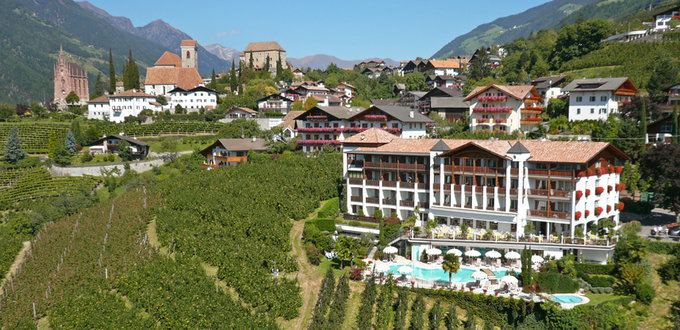Elevation 600 m (2,000 ft) Area 48.2 km² Dialling code 0473 | Time zone CET (UTC+1) Local time Friday 5:06 AM Postal code 39017 | |
 | ||
Frazioni Schennaberg (Montescena), Tall (Valle), Verdins Demonym(s) German: SchennanerItalian: di Scena Weather 10°C, Wind NW at 5 km/h, 70% Humidity Region Trentino-Alto Adige/South Tyrol | ||
Schenna im s dtirol globe tv sendung
Schenna ( [ˈʃɛna]; Italian: Scena [ˈʃɛːna]) is a comune (municipality) in South Tyrol in northern Italy, located about 25 kilometres (16 mi) northwest of the city of Bolzano.
Contents
- Schenna im s dtirol globe tv sendung
- Map of 39017 Scena Province of Bolzano South Tyrol Italy
- Schenna in s dtirol impressionen
- Geography
- Frazioni
- Origin
- Place name
- Coat of arms
- Linguistic distribution
- References
Map of 39017 Scena Province of Bolzano - South Tyrol, Italy
Schenna in s dtirol impressionen
Geography
As of 30 November 2010, it had a population of 2,841 and an area of 48.2 square kilometres (18.6 sq mi).
Schenna borders the following municipalities: Hafling, Kuens, Merano, Riffian, St. Leonhard in Passeier, Sarntal, and Tirol.
Frazioni
The municipality contains the frazioni (subdivisions, mainly villages and hamlets) Schennaberg (Montescena), Tall (Valle), and Verdins.
Origin
In the Middle Ages an important castle was built. Archduke Johann of Austria acquired it in 1845. In the 1970s, 1980s and 1990s many festivals took place inside it, but now, for health and safety reasons (since there was no emergency exit) there are no more.
Inside the castle, known as "Schloss Schenna" Andreas Hofer's cot is to be found.
Place-name
"Schenna" comes from the German "Schön Au" meaning "Lovely Pasture" which is why it used to be written "Schönna", although others say that it is named after a Roman landowner called Sconius. In the 6th-7th century people began to arrive from Bavaria and Franconia.
Coat-of-arms
The shield is argent and sable party per fess; at the top a gules lion is represented coming out from the bottom. The emblem was adopted in 1972, even if it was in use prior to World War I.
Linguistic distribution
According to the 2011 census, 98.18% of the population speak German, 1.67% Italian and 0.15% Ladin as first language.
